Modelling Clay Guide
Composition
There are different types of clay available in the market, each with its own unique composition. Some common compositions include oil-based clay, polymer clay, and air-dry clay.
Oil-based clay, such as Monster Clay Premium Grade Modeling Clay, is a popular choice among professional artists. It consists of mineral oil, wax, and sulfur, providing a smooth and pliable texture. Polymer clay, like Sculpey III Oven Bake Clay, is made of PVC particles, plasticizers, and pigments. It becomes permanent and hard when baked in an oven, making it suitable for creating detailed sculptures. Another option is air-dry clay, such as Crayola Air Dry Clay. This clay hardens by exposure to air over time, eliminating the need for baking or firing. Details from specifications such as the amount of product or curing time can give insight into a product's composition.
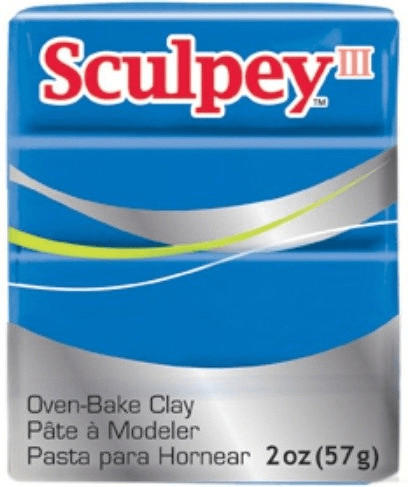
Color options
Whether you are working on a specific project or just want a variety of colors to unleash your creativity, having a range of colors in your modelling clay set can make a huge difference.
One option in the market is the Sculpey III Oven Bake Clay. This polymer clay comes in a wide selection of vibrant and bold colors such as red, yellow, and blue, allowing you to effortlessly mix and create custom shades. Another great option is the Crayola Air Dry Clay, which offers a range of bright colors like purple, green, and orange. This clay can be easily shaped and air-dried, making it convenient for young creative minds. Lastly, for those looking for more subtle and earthy tones, the DAS Air-Hardening Modeling Clay offers colors like terracotta, stone gray, and sand, perfect for creating realistic sculptures. With these color options, you can choose the clay that best suits your project, whether it be vibrant and playful or natural and organic.

Texture
Texture affects how easy it is to manipulate and work with the clay, as well as the final look and feel of the finished product. For those looking for a soft and pliable texture, the Sculpey III Polymer Clay is an excellent choice. This polymer clay boasts a smooth texture that makes it easy to blend and create intricate details. Another option is the Prang DAS Air Hardening Modeling Clay, which dries to a smooth and firm texture, allowing for easy carving and painting on the finished piece. Sculptors who prefer a more rigid texture for their artworks can turn to the Cosclay Heat & Clay, which has an extremely firm texture that holds details exceptionally well. These different types of modelling clay cater to different preferences, providing options for artists of various styles and needs.


Odor
Some people may have sensitivity to strong smells or may simply prefer working with clay that has little to no odor. For those who are sensitive to smells, it is recommended to look for odorless or low-odor options such as the Sargent Art Plastilina Modeling Clay. This clay is hypo-allergenic, non-toxic, and does not emit any detectable offensive odors. Another great choice for those who prefer minimal odors is the Polyform Non-Drying Modeling Clay. This clay is residue-free and does not have a strong smell, making it pleasant to work with.
In terms of various clay options available in the market, one can categorize them into two groups based on odor: odorless and low-odor clays. Under the category of odorless clays, some popular choices include CreateFun Air Dry Clay, Fimo Professional Soft Polymer Clay, and Crayola Modeling Clay. These clays are known for their lack of detectable odors, making them ideal for those with sensitivities. For low-odor clays, options like Amaco Air Dry Modeling Clay, Mont Marte Air Hardening Modeling Clay, and DAS Air-Hardening Modeling Clay are worth considering as they have minimal odors compared to other clay varieties.
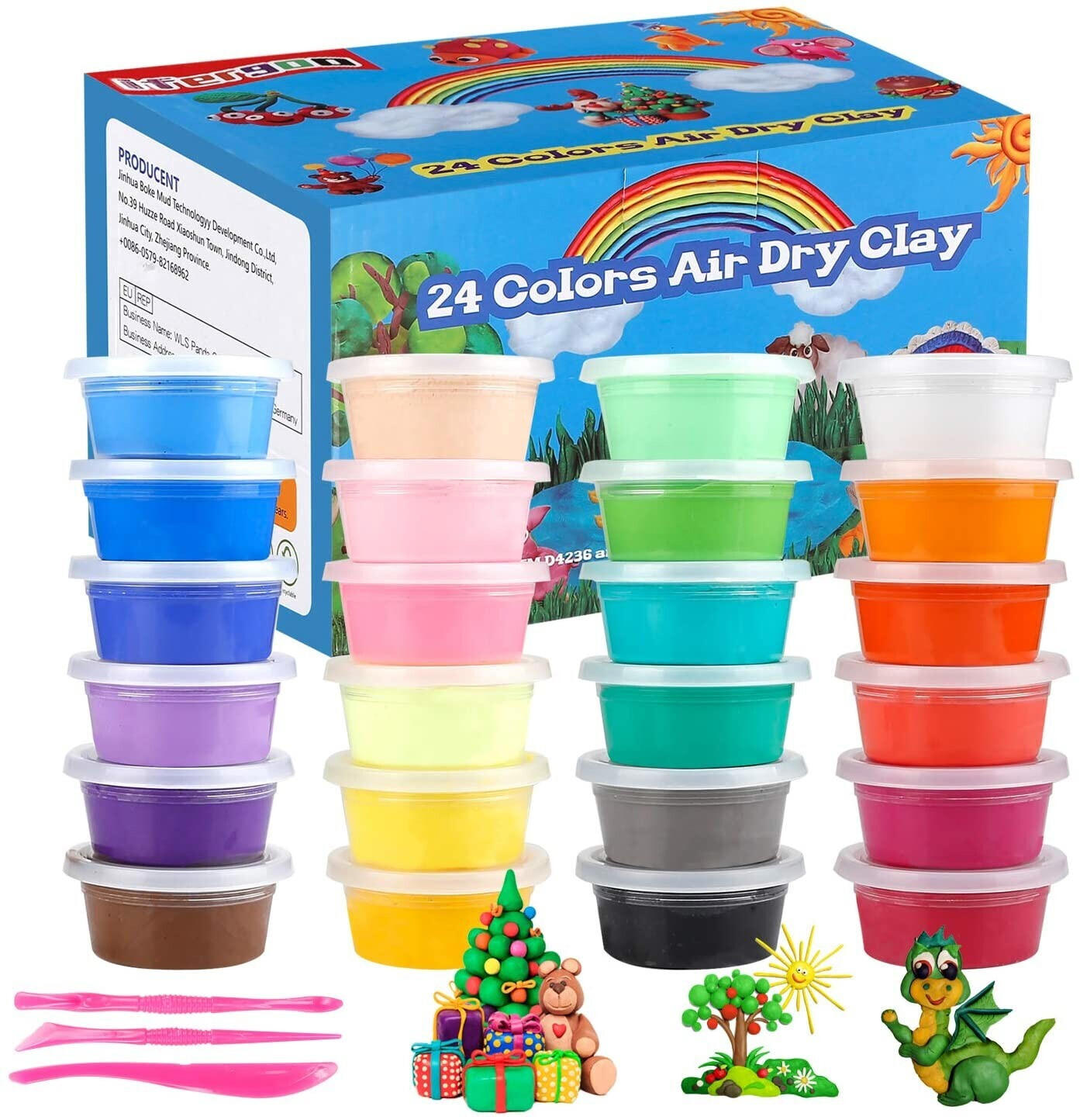

Safety certification
Look for products that are independently tested and certified to meet safety standards such as the ASTM D-4236. One example is the DAS Air-Hardening Modeling Clay, which is certified non-toxic and safe for all ages. It is manufactured with natural materials, such as cellulose fibers, and contains no harmful substances like phthalates or lead.
Another option is the Sargent Art Plastilina Modeling Clay, which is also ASTM D-4236 certified. This clay is free of sulfur and gluten, making it safe for those with allergies. Furthermore, it conforms to CPSIA and AP standards, ensuring it meets the highest safety requirements for children.
Other safety certified modelling clay on the market includes brands like Crayola Air-Dry Clay and Polyform non-toxic Modeling Clay. It's worth noting that while these clay products may come in different variations and colors (such as white, green, or multicolored), they all offer the same safety certification, indicating their non-toxic nature and suitability for all users.
Non-toxicity
This is especially important if the modelling clay will be used by children, as they tend to explore through touch and often put objects in their mouth. A reliable option is the Crayola Model Magic Modeling Compound, which is specifically designed to be safe and non-toxic. It is gluten-free and contains no latex, making it a suitable choice for younger users. Another non-toxic choice is the Sargent Art Plastilina Modeling Clay, which is made of non-drying oil and sulfur free materials, ensuring a safe and healthy sculpting experience. Both of these products provide peace of mind for parents, teachers, and artists when it comes to the safety of their creations.
Age appropriateness
Young children, ages 3-5, may benefit from using clay that is specifically designed for their small hands and developing fine motor skills. A good option for this age group is the Crayola Model Magic Clay, which is lightweight and easy to manipulate. It is also non-toxic and doesn't crumble, making it safe for young children.
For older children, ages 6 and above, they can handle more complex clay projects and may enjoy experimenting with different textures and finishes. The Sargent Art Plastilina Clay is an excellent choice for this age group. It is non-hardening and non-toxic, allowing for endless creativity without the worry of the clay drying out. Another option for older children is the Sculpey III Oven Bake Clay, which can be baked in a conventional oven to create permanent, durable sculptures. It comes in a wide range of colors and is suitable for intricate details and advanced techniques.
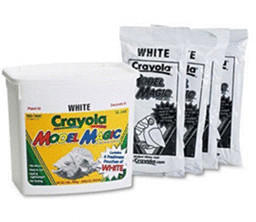

Hardness
The hardness of the clay determines how easy or difficult it is to shape and manipulate. While many clay brands offer different levels of hardness, some recommended products for specific needs include the following:
Polymer clays: Known for their firm and pliable texture, popular options like
Sculpey IIIor Premo! are ideal for intricate details as they hold their shape well and stay firm during delicate sculpting.Air-dry clays: Unlike polymer clays, these are left to dry and harden on their own without needing heat or an oven. For beginners or those looking for a softer clay,
Sargent Art Dress-Up Overhead Projector Clayor Crayola Air-Dry Clay offer a more pliable texture that is easy to shape.Oil-based, modeling clays: Known for a firmer texture, these clays retain their shape over time. Chavant Clay or Van Aken Sculpture Clay are often used in professional sculpting due to their durability and ability to capture intricate details.
Remember, the right hardness of clay will depend on your specific needs, preferences, and sculpting techniques. It's important to test out different types and brands to find the one that suits you best.
Softness
Softness refers to the ease with which the clay can be shaped and manipulated. For those in search of a highly pliable and malleable modelling clay, a great option is the Sculpey III Oven-Bake Clay. This clay is known for its softness, making it effortless to create intricate details and to blend colors together. Additionally, the Prang DAS Air-Hardening Modeling Clay is a popular choice among sculptors, as it offers a good balance between softness and firmness, allowing for precise sculpting while still maintaining shape when dry. Bear in mind that some brands offer a range of clay types with different softness levels, such as Fimo Soft which has a softer texture compared to other variants in the Fimo line. Ultimately, softness is an important characteristic to consider when choosing the right modelling clay as it can greatly impact the ease and quality of your creations.

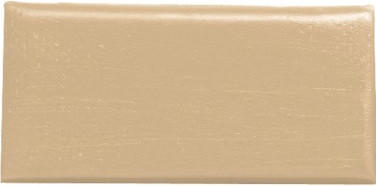
Malleability
Malleability refers to how easily the clay can be shaped, molded, and manipulated without cracking or becoming too stiff. A good quality modelling clay should be soft and pliable, allowing the artist to work with it effortlessly.
One example of a modelling clay that boasts excellent malleability is the Sculpey III Oven-Bake Clay. This polymer clay is known for its soft and smooth texture, making it easy to shape and blend. Another option is the DAS Air Drying Modelling Clay, which is praised for its high elasticity and easy workability. For those looking for an oil-based clay, the Plastilina Roma Soft stands out with its exceptional malleable properties. Each of these clays provides artists with the flexibility and ease of use needed to bring their creative visions to life.

Durability
The durability of modelling clay determines its ability to withstand different types of handling and molding, allowing for a longer-lasting finished piece. One example of a highly durable modelling clay is the Sculpey III Oven-Bake Clay. This polymer clay is known for its strength and flexibility, making it perfect for intricate projects that require strength and fine details to be preserved. It can be easily baked and remains durable after hardening, ensuring that the finished creations will last for years to come. Another option is the Crayola Air-Dry Clay, which is specifically designed to be hardened simply by air drying, without the need for baking in an oven. This clay also provides excellent durability, allowing for long-lasting sculptures without the need for additional steps such as baking. Other durable clay options include DAS Air-Hardening Modeling Clay, Polly Plastics Moldable Plastic Pellets, and Apoxie Sculpt.

Stickiness
The level of stickiness varies among different brands, and it can greatly impact your sculpting experience. For those who prefer a less sticky clay, the Crayola Model Magic is an excellent choice. With its lightweight and non-sticky formula, this air-dry clay allows for easy sculpting and model making. Alternatively, the Sculpey III Polymer Clay offers a low tack, making it easy to handle without leaving residue on your hands or workspace. These clays are commonly used for projects that require intricate details as their low stickiness prevents smudging or unintentional blending while working. On the other hand, artists seeking a more adhesive clay might prefer the Blick Plastilina Modeling Clay, well-known for its strong bonding properties and ability to hold fine details. Its sticky consistency makes it perfect for artists who prefer sculpting large and heavy structures or require more strength when joining different clay parts together.


Drying time
This refers to how long it takes for the clay to dry and harden after being shaped. For those who prefer a slower drying time to allow for more intricate detailing, an excellent option is the Sargent Art Plastilina clay. This oil-based clay air-dries over time, allowing artists to work on their projects for an extended period before it hardens. On the other hand, if a quick drying time is needed, the DAS Air-Hardening Modeling Clay is an ideal choice. This water-based clay dries within approximately 24 hours, making it great for projects that require a faster turnaround.
Other products in the same category of slow drying clays include Chavant NSP and Amaco Permoplast, while fast drying clays also include Sculpey Original Polymer Clay and FIMO Air Basic Modeling Clay. Remember to consider the drying time factor when selecting the perfect modelling clay to suit your specific artistic needs.
Reusability
This refers to the ability of the clay to be reused multiple times without drying out or becoming too hard. Christine's Clay is a great option as it offers high reusability, allowing you to mold and reshape it countless times. With Christine's unfired and nontoxic formula, you can keep reusing the clay and exploring your creative ideas without any limitations. Another excellent choice in terms of reusability is Sculpey Original Polymer Clay. This polymer clay stays soft until baked, so you can easily modify or fix your creations before placing them in the oven. Its pliability guarantees many hours of fun and experimentation. Whether you choose Christine's Clay or Sculpey Original Polymer Clay, both are highly reusable options that will provide you with endless sculpting possibilities.
Shelf life
The shelf life refers to the period in which the clay can be stored and used without deterioration. Different modelling clays have varying shelf lives, so it is important to select one that meets your needs and preferences. An excellent option with an extended shelf life is Sculpey III Polymer Clay, which can be stored for years if sealed properly. Alternatively, FIMO Soft Polymer Clay also offers a long shelf life, allowing you to keep it for a considerable amount of time before use. Remember to read the product specifications or manufacturer's recommendations to ensure maximum shelf life and proper storage.



Ease of kneading
This refers to how easy it is to manipulate the clay and mold it into the desired shapes. Some products on the market have been specifically designed to offer a smooth and soft texture, making them perfect for creating intricate details or for younger children who may have limited strength in their hands.
One such example is the Super Sculpey Original Clay, which has a firm texture that is easy to knead and holds fine details exceptionally well. Another option is the Crayola Terra Cotta Air-Dry Clay, which has a pliable and smooth consistency that makes it easy to work with and doesn't require baking.
Alternatively, there are some modelling clays available for children that offer a softer and more pliable texture. These include Sargent Art Plastilina Modeling Clay or DAS Air-Hardening Modeling Clay, both of which are non-toxic and kids-friendly options that are easy to knead and shape.
Crumbling resistance
Crumbling resistance refers to the ability of the clay to maintain its shape and structure without falling apart or crumbling. A modelling clay with high crumbling resistance is ideal as it allows for easier sculpting and manipulation.
One example of a modelling clay with excellent crumbling resistance is the Sculpey III Oven-Bake Clay. This clay is known for its smooth texture and excellent strength, as it does not crumble or crack during the drying process. Another option is the FIMO Soft Polymer Clay, which boasts high crumbling resistance as well. This clay remains soft and pliable until baked, making it easy to work with.



For more professional artists or advanced users, the Chavant NSP Clay is a popular choice. It is an oil-based clay that offers exceptional crumbling resistance and is often used in sculpting, prototyping, and special effects. Similarly, the professional grade Roma Plastina Modelling Clay is another excellent option, known for its superior crumbling resistance and ability to hold intricate details without crumbling. These high-performance clays provide optimal crumbling resistance for those looking for precise and intricate sculpting.
Ease of shaping
This refers to how pliable and workable the clay is, allowing users to effortlessly mold it into various shapes and forms. Some excellent options in this category are Crayola Modeling Clay and Sculpey III Oven-Bake Clay.
Crayola Modeling Clay is known for its soft, non-toxic, and easy-to-mold formula, making it suitable for both young children and beginner artists. It doesn't dry out, providing prolonged workability and allowing for endless imagination. On the other hand, Sculpey III Oven-Bake Clay is a versatile polymer clay that is soft, pliable, and perfect for both detailed sculpting and larger projects. It can be easily molded by hand or using sculpting tools like carving knives and pottery tools. Additionally, it holds its shape well during baking, ensuring that your creations stay intact.


Elasticity
This refers to the clay's ability to return to its original shape after being stretched or manipulated. A highly elastic clay allows for easy molding and shaping, making it perfect for artists who prefer to work with intricate details and fine textures. One excellent example of a highly elastic modelling clay is the Sargent Art Plastilina Clay. This non-toxic clay is latex-free and has a high elasticity rating of 3-4, making it easy to mold and sculpt. Another option to consider is the Maddie Rae's Super Soft Modelling Clay, which boasts excellent elasticity and is suitable for both kids and adults alike. An affordable yet reliably elastic option for beginners is the Das Air Dry Modelling Clay, which has a smooth and pliable texture, enabling artists to shape and reshape their creations to their desired forms.
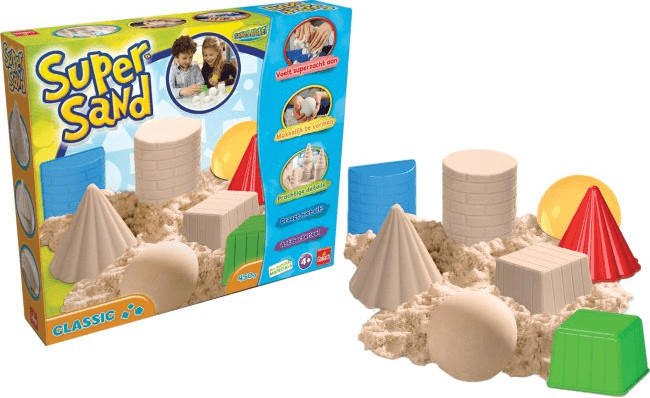
Fading resistance
Fading resistance refers to the ability of the clay to maintain its color over time, without significant fading or discoloration. One great option to consider is the Sculpey III Oven-Bake Clay, which boasts a superior fading resistance. With its fade-resistant formula, Sculpey III ensures that your creations will retain their vibrant colors even after baking. Another top choice is the Polyform Premo Sculpey Clay, which is known for its fade-proof feature, ensuring that your finished projects will stay as bright and vivid as when you first created them. Several other premium products, such as Kato Polyclay and FIMO Professional Soft Clay, also offer excellent fading resistance, making them ideal options for artists who want long-lasting, vibrant creations.

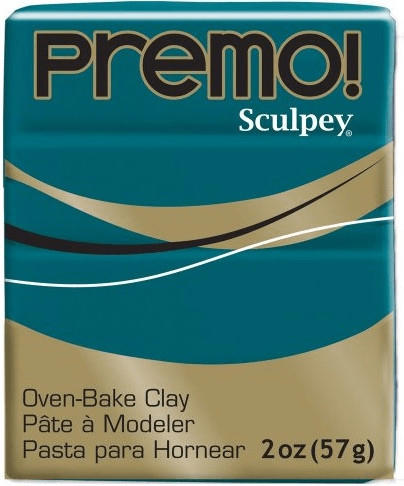

Vegan-friendly
Vegan modelling clays are made without the use of any animal-based ingredients or by-products, aligning with the principles of ethical and sustainable art. One outstanding product within this category is AMACO Air-Dry Clay. This clay is not only vegan-friendly but also air-dries completely, eliminating the need for any baking or firing. It is available in various colors and has a smooth texture, allowing artists to create intricate details in their sculptures. Additionally, Kato Polyclay is another excellent choice for vegans. This oven-bake clay is entirely animal-free and maintains its strength and flexibility after baking. It is widely regarded as a superior clay due to its ease of use, durability, and ability to retain fine details.
Gluten-free
For individuals with gluten allergies or sensitivities, it is crucial to select modelling clays that are gluten-free to avoid any adverse reactions. One option that meets this requirement is the Amos Gluten-Free Air Dry Modeling Clay Kit. This clay is specially formulated without any gluten and is perfect for creating various sculptures, figures, and decorations. Additionally, the Chavant NSP Medium Sulphur-Free Sculpting Clay is another gluten-free option for professional artists who require a clay that can be used for sculpting and modeling without any repercussions. Both of these products provide a safe and creative avenue for individuals looking for gluten-free modelling clay options.
Washability
This refers to how easy it is to clean the clay off surfaces and hands after use. A great option for washable clay is Scotch Magicut Clay. This water-based clay is non-sticky, making it effortless to remove from hands, and it can be easily wiped off surfaces with a damp cloth. Another excellent choice is Crayola Model Magic. This lightweight and soft clay can be easily washed off with soap and water, ensuring a hassle-free clean-up experience. Both of these products boast high washability due to their unique formulations and can be great options for those looking for an easy-to-clean modelling clay.
Stain-free
Stain-free clay prevents unwanted discoloration on hands, surfaces, and even fabrics, allowing for mess-free creativity. An excellent stain-free option is the Amaco STONEX Self-Hardening Clay. This unique clay boasts a smooth texture and air-dries while retaining fine details. It is stain-free, making it perfect for little artists who like to get their hands dirty without worrying about leaving marks. Another great option is the Crayola Model Magic Clay, which is a lightweight and spongy clay that also remains stain-free. This clay provides a fun and mess-free experience, drying to a cool touch and allowing for easy moldability. Both of these products are widely available and offer stain-free benefits, making them suitable for artists of all ages.

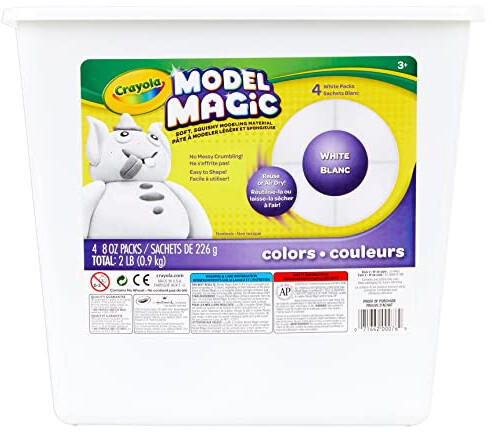
Compatibility with other clays
This can be especially crucial if you plan to blend different clays together or want to use other clays for specific details or textures. Certain clays are formulated to work well together, ensuring smooth and seamless integration. For example, the Sculpey III clay is compatible with other Sculpey clays, such as Premo!, Super Sculpey, and Sculpey Souffle. These clays can be easily mixed and blended, allowing for a wide range of colors and properties. Additionally, the Pigmented Monster Clay is highly compatible with other types of sulphur-free clay, making it ideal for sculptors who want to combine different clays for their projects.
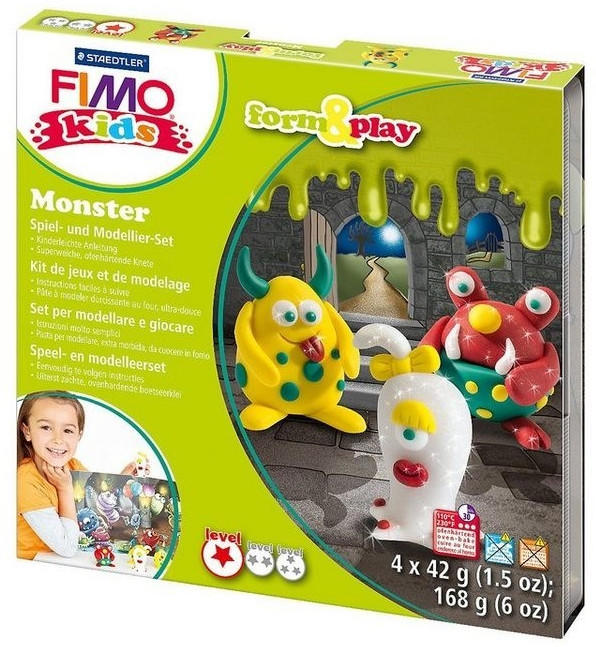
Compatibility with tools
Some types of clay may harden quickly and become difficult to work with, while others may remain too soft and not hold their shape. For beginners or professionals using clay with a variety of tools, a versatile option is Sculpey Premo Polymer Clay, which is compatible with an array of tools such as sculpting tools, texture stamps, and molds.
For those looking for a clay specifically designed for use with pottery and wheel throwing tools, a suitable option is AMACO Stoneware Clay. This clay has a high level of plasticity and elasticity, making it ideal for throwing on a pottery wheel. Additionally, it has a slow drying time, allowing for more flexibility in shaping and detailing.
In the realm of air-dry clays, the DAISO Japan Soft Clay is a popular option due to its versatility and compatibility with various modeling tools. As an air-dry clay, it does not require baking and can be shaped quickly, making it ideal for beginners or those seeking a convenient clay option for quick projects.
Another class of clays suitable for use with specific tools are oil-based clays, such as the well-known brand Plasticine. These clays are known for their compatibility with sculpting and modeling tools, as they can be easily manipulated and reshaped without drying out. Often used by artists and animators, oil-based clays are non-drying, allowing for lengthy work sessions and consistent results when paired with appropriate tools.


Consider the compatibility of the modeling clay with your preferred tools to ensure effortless sculpting, shaping, and detailing without compromising the workability of the clay.
Compatibility with molds
Some clays work better with specific types of molds and may not provide the desired results with others. For example, if you plan to use silicone or rubber molds, it is important to choose a clay that will not stick to the mold when it dries. One such recommended product is the Sculpey III Oven-Bake Clay. It is not only compatible with silicone molds, but also provides crisp details in small projects and has a smooth texture, making it perfect for intricate designs. Another option to consider is the Super Sculpey Firm Grey Clay, which has a firm consistency. It is compatible with silicone and latex molds, enabling the creation of highly detailed sculptures without the risk of distortion. Additionally, Polyform Premo Oven-Bake Clay is a versatile option that can be used with various types of molds, including silicone and rubber, as it exhibits excellent flexibility and pliability while maintaining strong precision.

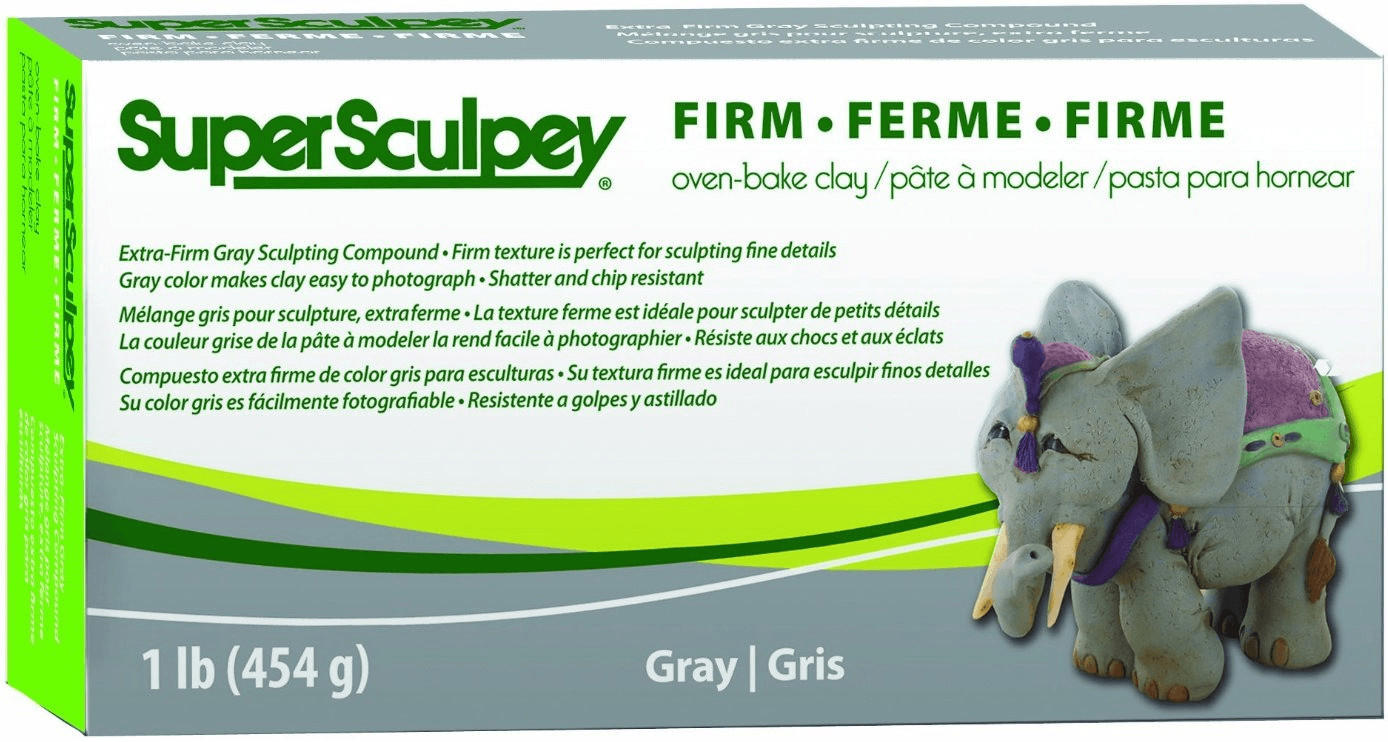
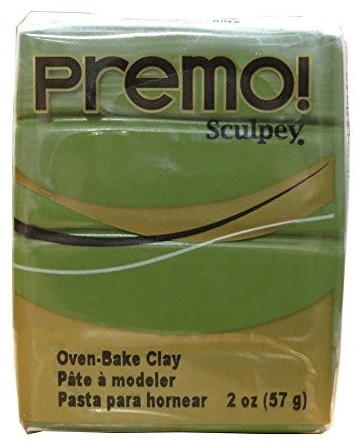
Heat resistance
Heat-resistant modelling clay is essential for projects that require baking or firing the clay to set or harden it. Different brands offer various heat-resistant options suitable for specific temperature ranges. For instance, Sculpey III Oven-Bake Clay boasts a maximum baking temperature of 275°F (130°C) and is perfect for projects that require a low to medium firing temperature. On the other hand, seasoned artists working with high-temperature projects may prefer Super Sculpey Firm, which can withstand temperatures up to an impressive 300°F (149°C). These temperature specifications are critical in selecting a modelling clay that performs well under heat, ensuring the final sculpture retains its shape and durability.



Finishing options
Finishing options determine the final look and texture of your model and can vary greatly between different types of clay. Some clays offer a smooth finish that is perfect for detailed sculptures and intricate designs, while others provide a textured finish for adding depth and realism to your creations.
One example of a clay with a smooth finish is Polyform Sculpey III Oven Bake Clay. This clay is known for its smooth texture and is perfect for creating intricate details. It can be easily sanded and painted after baking, giving you complete control over the final look of your model.
For a clay with a textured finish, Crayola Air-Dry Clay is a great option. This clay air-dries to a hard finish and provides a natural, earthy texture. It is ideal for creating sculptures that require a more organic look, such as animals or landscapes. The textured finish adds depth and character to your creations.


When it comes to finishing options, it's important to consider the level of detail you want to achieve and the overall aesthetic you are aiming for. Whether you prefer a smooth or textured finish, there are clay options available that can help you bring your creative vision to life.
Glossiness
Glossiness refers to the level of shine the finished clay object will have. Some artists prefer a high gloss finish while others prefer a more matte appearance. If you desire a clay that produces a shiny, glossy finish, products like Sculpey Premo! Accents Clay or Fimo Professional Polymer Clay are great options. These clays are known for their high level of glossiness and are designed to create stunning, professional-looking finished pieces. Both the Sculpey Premo! Accents Clay and Fimo Professional Polymer Clay offer excellent color saturation, fine details, and a glossy finish that enhances the vibrancy and brilliance of the colors even after baking.
Note that Glossiness rating of clay can vary according to each brand's specifications. Clays like Super Sculpey Firm and Chavant NSP Chavant Clay are known for their matte finish. These clays offer a more artistic and natural look suitable for sculpture making. Alternatively, Creative Paperclay Modeling Material is a self-hardening clay that dries with a smooth matte finish, making it suitable for crafting projects such as doll making or creating small decorative objects.
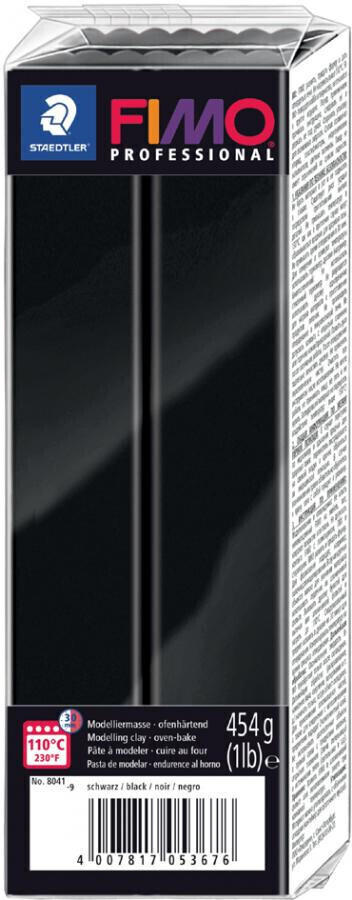
Saturation
Saturation refers to the degree to which the clay is capable of holding color. For artists who prefer vibrant and highly pigmented works, a highly saturated clay is a must-have.
One example of a highly saturated modelling clay is the Sculpey III Oven-Bake Clay. This polymer clay comes in a wide range of colors and is known for its intense pigmentation. With a saturation level of 100%, it allows artists to achieve rich and vibrant colors in their sculptures and designs. Another great option is the Faber-Castell Fimo Soft Polymer Clay, which offers excellent saturation with its range of 24 highly pigmented colors. The Fimo Soft clay is also known for its smooth and easy-to-mold texture, delivering impressive results with each use. Both of these clays are perfect choices for artists seeking intense color payoff in their artwork.



Retention of fine details
This refers to the clay's ability to hold intricate shapes and textures during the sculpting process. One example of a modelling clay that excels in this aspect is the Sculpey Super Sculpting Gray Bakeable Fine Detail Clay. This polymer clay boasts a high level of fine detail retention thanks to its firm consistency and added flexibility. Another great option is the Chavant NSP Industrial Plasticine Clay, which is widely used by professional artists. This oil-based clay is known for its exceptional precision and consistency in capturing the smallest details, making it ideal for delicate sculptures. Whether you're an experienced artist or a beginner, these clays are sure to provide excellent detail retention for your sculpting projects.
Sculpting time limit
The sculpting time limit refers to the amount of time that you have to work with the clay before it starts to harden and set. This is especially important for those who prefer to take their time with their creations or are working on larger projects.
For those who require a longer sculpting time, a great option is the Sculpey Oven-Bake Clay. This clay offers an extended working time, allowing artists to work on intricate details and take their time to perfect their creations. Another option is the Polymer Clay Starter Kit which includes multiple colors of clay with a longer working time. Both of these options are easy to use and can be baked in the oven to set the clay permanently. Other popular clay brands such as Fimo Soft and Premo! Sculpey also provide clay with relatively longer sculpting time limits. Overall, taking into account the specific sculpting time limit required for your projects will ensure you choose the modeling clay that best suits your needs.

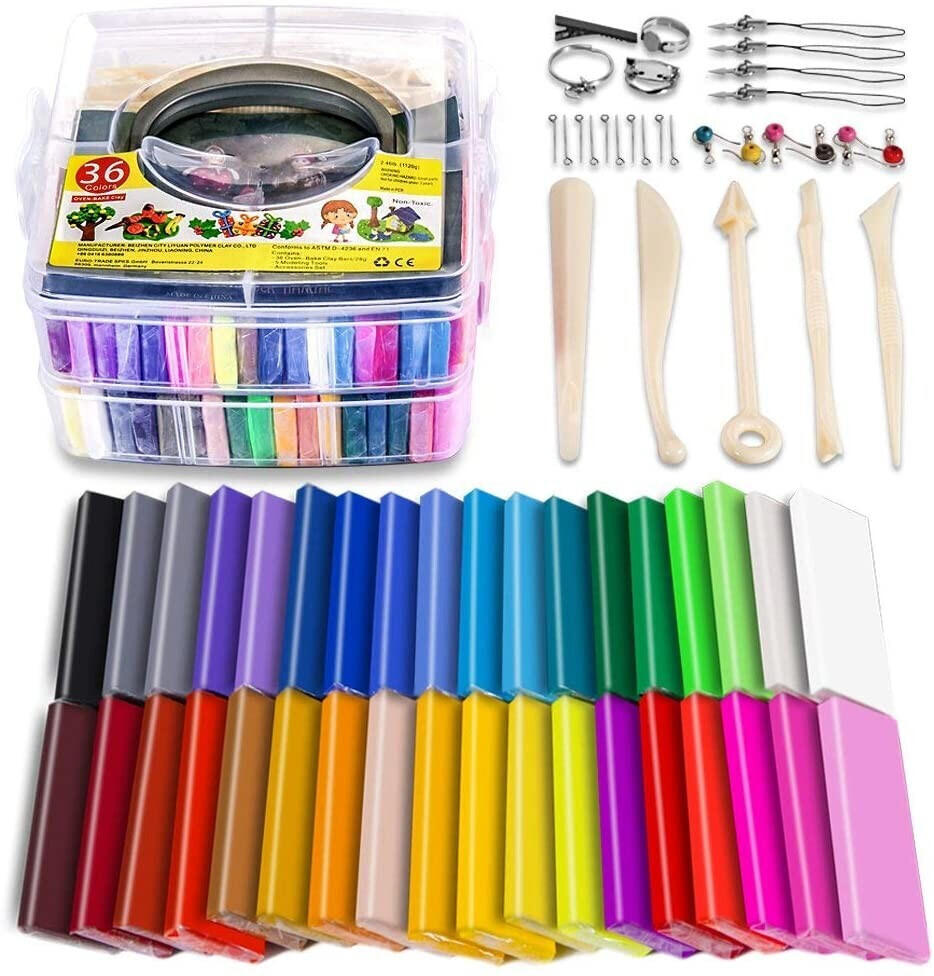


Curing time
Curing time refers to the amount of time it takes for the clay to harden and become firm. This can be crucial if you are working on time-sensitive projects or have limited patience. Some modelling clays have a quick curing time of just a few minutes, while others may require several hours or even days to fully cure.
If you are looking for a modelling clay with a quick curing time, consider Sculpey III Oven-Bake Clay, which cures in just 15 minutes per 1/4 inch thickness, making it ideal for projects that require a speedy turnaround. However, if you prefer a slower curing time for more intricate details or have a larger project, the Polyform Premo! Sculpey offers longer curing times of 30 minutes per 1/4 inch thickness. It could be beneficial to categorize modelling clays into fast-cure and slow-cure groups in order to better identify the ideal options that suit different project requirements.



Versatility
Versatile modeling clay allows artists to bring their creative visions to life through a wide range of techniques and projects. One exceptional product that offers exceptional versatility is Sculpey III Oven-Bake Clay. This polymer clay is pliable, easy to blend, and can be shaped and molded into intricate details. It can be stamped, painted, and sanded after baking to achieve desired effects. Another option for versatile modeling clay is Prang DAS Air-Hardening Modeling Clay. This type of clay dries without the need for baking and can be easily carved, stamped, or painted. Similarly, the Eeboo Papier-Mâché Clay provides a different texture suitable for sculpting and mold-making. Combining qualities of traditional clay and paper, it is perfect for construction projects and creating larger sculptural pieces. Overall, these products cater to various artistic techniques and suit both novice and experienced sculptors who seek a versatile modeling clay.

Price
Fortunately, there are various options suitable for every budget. For those looking for an affordable yet reliable choice, Sargent Art Plastilina Clay is a fantastic option. Available at a budget-friendly price, this non-hardening clay is perfect for beginners and those looking to experiment with sculpting. Additionally, Crayola Modeling Clay, also reasonably priced, offers a smooth and easily moldable clay that doesn't dry out. For those willing to invest a little more, the Chavant NSP Clay stands out in a slightly higher price range, known for its professional-grade quality and being sulfur-free, making it a preferred choice for sculptors working on intricate projects.
Variety of brands
Some popular options on the market include Sculpey III, Fimo Soft, and Crayola Model Magic. Sculpey III is known for its soft texture, making it easy to mix, shape, and blend colors. It bakes to a hard finish, making it great for durable sculptures. However, it may be slightly more brittle than other brands and can be prone to cracking. Fimo Soft, on the other hand, offers a slightly firmer texture and excellent shape retention. It has a longer curing time and maintains its flexibility even after baking. However, it may be considered too firm for beginners or those looking for a softer clay. Finally, Crayola Model Magic, a non-toxic air-dry clay, is a popular choice for children due to its lightweight and easy-to-mold consistency. Although it doesn't require baking, it can be more prone to crumbling and doesn't offer the same level of durability as oven-baked clays.
Some other brands within the segment of polymer clay include Prima and Premo.
